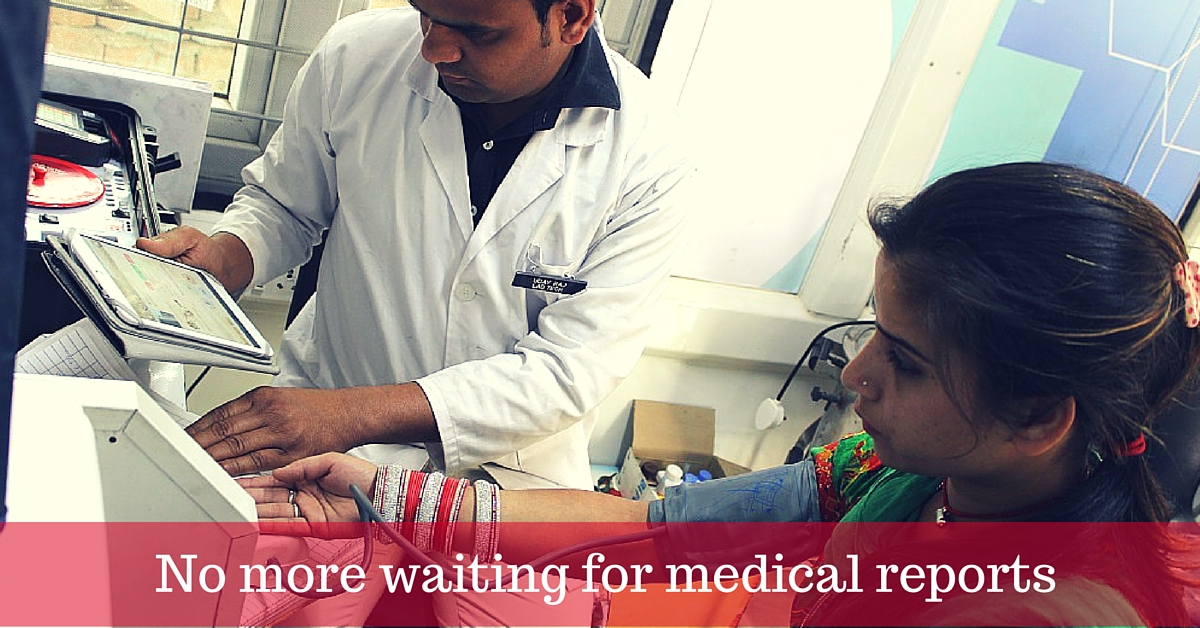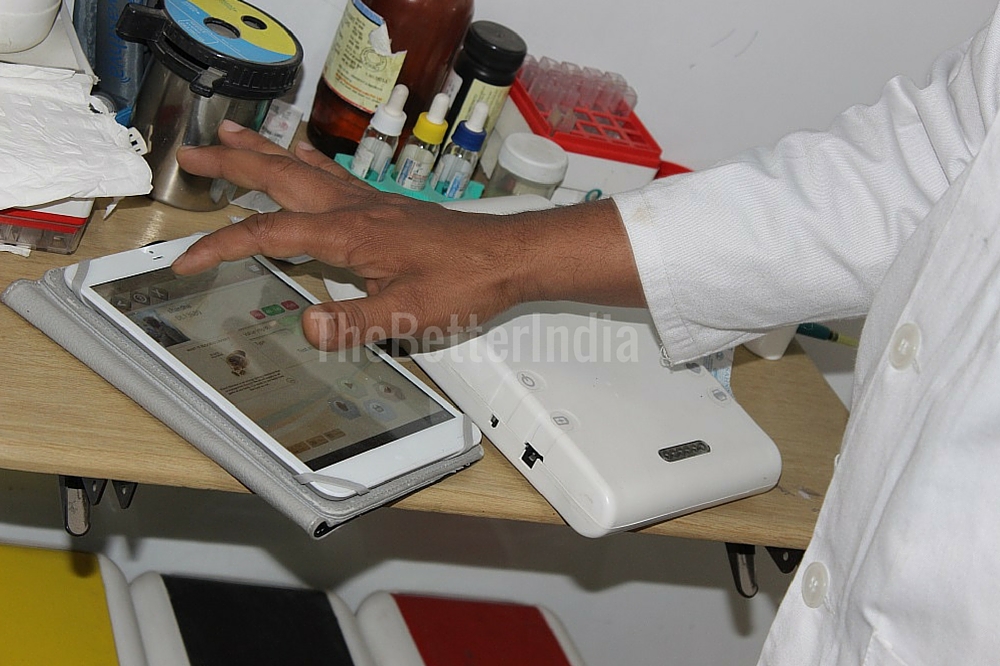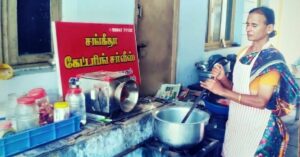A Medical Device That Can Conduct 33 Diagnostic Tests in Just 45 Minutes
Remember going for your last blood test? How long did you have to wait for your report – eight hours, a day, two days, or more? Here is a revolutionary medical device that completes 33 diagnostic tests in about 45 minutes. And you get your results with just a tap of the button.

Remember going for your last blood test? How long did you have to wait for your report – eight hours, a day, two days, or more? Here is a revolutionary medical device that completes 33 diagnostic tests in about 45 minutes. And you get your results with just a tap of the button.
“I am fascinated by the fact that almost every medical device or system we develop – whether it is for world class cancer care or anything of that sort – is always meant for the top 1% population of the world. And there are at least five billion of us who lack access to quality diagnostics. We develop medical technology only for the top 1% and wait for the trickle-down effect to take place. But I think this process should be reversed,” says Kanav Kahol, the brains behind Swasthya Slate, a medical device that can complete 33 common diagnostic tests in about 45 minutes.
Some of the tests performed by this device include those meant for measuring blood pressure, blood sugar, heart rate, blood haemoglobin, urine protein, etc.
The device is highly beneficial for diseases like malaria, dengue, hepatitis, HIV, and typhoid that require quick results.

“One of the most exciting things about Swasthya Slate is that it is an instantaneous system. So it really helps in the sense that you don’t have to wait for days and hours to know that you have dengue. You can find out instantly and begin your treatment,” says 36-year-old Kanav, a biomedical engineer who was a researcher at Arizona State University’s Department of Biomedical Informatics, before he returned to India.
He developed Swasthya Slate to empower front line health workers like auxiliary nurse midwives (ANMs) and accredited social health activists (ASHAs):

“We don’t have enough doctors and lab technicians in India. The current doctor to patient ratio is 1:1700 and WHO says it should be 1:1000. To address this gap, the government and private sector organizations are seeking help from frontline health workers like ASHAs and ANMs – people who travel the last mile and help provide that link within the healthcare system. We want to empower these health workers. They are the ones giving advice to expecting mothers in rural India, telling them if they need referral and so much more.”
The Swasthya Slate is basically a mobile platform that allows you to do various kinds of diagnostic tests on a mobile phone or a tablet. The kit consists of a digital thermometer, a BP monitor, an easy to use heart rate sensor, an ECG system, a blood sugar monitor, and a water quality unit. The whole system has to be connected with an interface that sends all the diagnostics to any android mobile device via Bluetooth stream or USB connection.
It is very easy for any user to plug all the systems to the interface and conduct the tests.

The tablet collects the data and sends it to a central server, creating a record of a patient’s health. All tests can be done in a single location and the results delivered to patients via SMS. They are also available online and can be easily downloaded.
Imagine someone going to the hospital to get tested for dengue. He/she gets tested, goes back home, and waits for about a day to get the result before any kind of treatment process can begin. However, with the Swasthya Slate, the patient has the results within a few minutes and the doctor can get started with the treatment right there. No unnecessary delay, queues or anxiety at all. This also reduces the time required for registering patients and recording the data. Decision-support algorithms in the tablet guide health workers to give medical recommendations and make referrals when needed. The automated systems in the device also send reminders to patients in the form of SMS, letting them know when they have to go for their next appointments or vaccinations. You can even share your reports with your well-wishers. The system is currently available in Hindi, English, Punjabi, Telugu, and Gujarati.
Swasthya Slate is being used in 80 locations worldwide – in places like Nigeria, Peru, Norway, Canada, Gujarat, Jammu and Kashmir, Delhi, Uttar Pradesh, Bihar, Meghalaya, etc.

“We are trying to merge it seamlessly within the existing system so that we can develop protocols where initial screenings can be done with devices like these, and then the patient can be sent to a larger laboratory if required. Quick initial screening in itself will be quite revolutionary and will lead to really better outcomes in cases of maternal and child care, diabetes, heart disease, and so on,” adds Kanav.
A complete Swasthya Slate kit costs USD 800 (approximately Rs. 53,000) with the tablet. According to Kanav, this price makes the device affordable in most parts of India because if you go and buy individual devices for all these tests, the cost will be around Rs. 5-6 lakh.
It is being used in government hospitals, by private buyers, NGOs, individual doctors, and patients as well.
“There have been cases when people walked in just thinking that they will get themselves checked and found their sugar level is 600 when it should be only 100. People have found they have dengue in just five minutes after coming to the hospital, and have hence received treatment at the right time. Haemoglobin levels of pregnant women are checked in less than 15 minutes and they are sent for treatment right away so that their children are safe,” says Kanav, who developed the device with the help of grants from Public Health Foundation of India and other such organizations.
“After my PhD, I was living the dream in the US – working with a Nobel Prize winner. But I wasn’t really satisfied working for the mature markets. I wanted to come back to India and create an impact. India is one of the greatest places to be an engineer. The impact makes you want to get up in the morning and say I want to go to work,” says Kanav, a resident of Delhi who went to the US for his Master’s and PhD degrees and was there for 11 years before he moved back to India in 2011.
“There were just too many of us waiting for miracles when technology needed to be developed to deliver those miracles anywhere, anytime – not to just a few rich people living in a few rich countries. Hence came up Swasthya Slate,” he concludes.
Watch how the device operates, here:
You can contact Kanav Kahol by writing to him at [email protected].
Like this story? Or have something to share? Write to us: [email protected], or connect with us on Facebook and Twitter (@thebetterindia).
This story made me
- 97
- 121
- 89
- 167
Tell Us More
We bring stories straight from the heart of India, to inspire millions and create a wave of impact. Our positive movement is growing bigger everyday, and we would love for you to join it.
Please contribute whatever you can, every little penny helps our team in bringing you more stories that support dreams and spread hope.



















